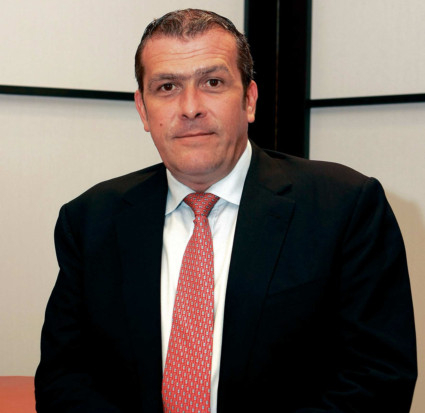
The growth of Indian wealth will be strong in the coming years. According to Julius Baer Asia Wealth Report, the number of Indian high net worth individuals (HNWI) is estimated to rise from 170,000 in 2010 to 400,000 with their wealth more than doubling to $2.47 trillion (about Dh9 trillion) by 2015.
HNWIs constitute around 10 per cent of non-resident Indians (NRIs) in the world. Of the estimated 30 million NRIs globally, there are 5.5 to 6 million NRIs currently working in the GCC.
When it comes to attitudes towards money, most NRIs grow up with a strong embedded value on savings. While being good savers, NRIs have hitherto been conservative investors who very much prefer ‘traditional’ modes of investment such as property, gold or reinvesting into their own businesses.
However, we have witnessed a change in NRIs’ investing habits over the past decades. In this Asian century, with India playing a significant role, these trends are a force to be reckoned with. They are summarised into five key trends below.
Key trend 1: Increasing asset allocation on securities
As wealth has increased, and with wider investment opportunities available, a culture of securities investing — equities, bonds, structured products — and more recently private equity and venture capital has emerged among NRI communities over the past 10 to 15 years. This trend is evident from the illustration alongside, which tracks NRI HNWI investment behaviour across the generations.
The driver behind this emerging trend stems from a higher awareness of business risk. First-and-second generation NRI business owners typically trust their business acumen and rely less on investment as a source of wealth creation. In contrast, third generation and new business owners, having witnessed the impact of shrinking business cycles and earnings volatility over the past decade, understand the importance of building a nest egg through a stable and structured long-term investment portfolio.
Key trend 2: Equity investment in India
More than 50 per cent of NRI investors have brokerage accounts in India.
Specifically, NRI HNWIs in the GCC region invest at least 40 per cent of their net worth in large-cap Indian equities, followed by US and European stocks, with a minor portion of their equity investment allocated in Asian markets such as Japan, Hong Kong and Singapore.
In my experience, NRI HNWIs in the GCC are reasonably active traders, who carry out at least an average of four to five trades every month to keep their portfolios active.
Key Trend 3: Hedging against volatility
NRIs invest in fixed income to hedge against volatility in business earnings. Placing utmost importance on predictability, the NRI HNWI is happy to invest with borrowed funds — either from their businesses or part of business cash flow — should he/she see income stability.
The fallout of the Great Financial Crisis (GFC) played a part in this trend. Once happy to leverage through interest- rate-linked structured products with capital protection, NRI investors have been shying away from complicated and longer-tenure structured products in favour of the benefits of pure fixed income.
More recently, however, the lure of investing in bonds at such low returns is starting to fade as interest rates have been driven down to almost zero by central banks. Increasingly, NRI HNWIs choose to avoid fixed income at returns they view to be incommensurate with the risk and are happy to sit on cash — by maintaining liquidity at around 10 to 15 per cent of total portfolio (including property) to keep powder dry for times of opportunities.
Key Trend 4: Property Investment in India and country of residence
Property has long been the most preferred physical asset class from which most first and second generation business owners generated significant personal wealth. Most NRI HNWIs opt to buy land in India — in addition to in their countries of residence — reflecting their attraction to markets they understand or are familiar with.
Other cities such as Dubai, London and those in the US (especially in recent years in view of its depressed property prices) also count as popular spots with NRIs in land acquisition. For example, Indians now own more than a hundred of 900 apartments in Dubai’s 828-metre skyscraper Burj Khalifa — a case in point for their growing financial power in West Asia.
Key Trend 5: Growing demand for succession planning services
Increasing levels of education and financial sophistication, as well as triggering events such as wealth transition or the sale of the family business, have driven NRI HNWIs’ demand for wealth preservation and succession planning solutions.
In comparison with Chinese HNWIs who tend to keep a low profile, Indians, particularly NRIs, are usually more eager to learn about wealth, succession and inheritance planning. This behaviour is based on the fact that NRIs, especially their next generation who have studied and worked in globally-renowned institutions, tend to be well educated, more sophisticated and less concerned about confidentiality issues.
Inheritance and succession planning tend to be sensitive topics within a family. In Julius Baer, our relationship managers as trusted advisors to the family are therefore ideally positioned to facilitate discussions. With their knowledge of wealth management and succession planning and their keen sense of the family’s dynamics, they are well placed to raise these issues with the family’s core decision-makers.
— The writer is Member of the Executive Committee Asia, Global Market Head India Sub-Continent and NRI, Bank Julius Baer & Co. Ltd. (Representative Office) Dubai Contact: info@juliusbaer.com







